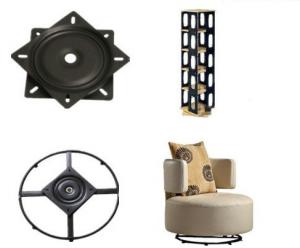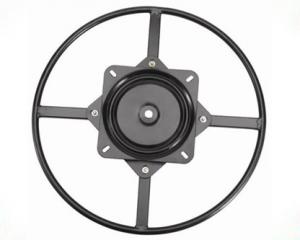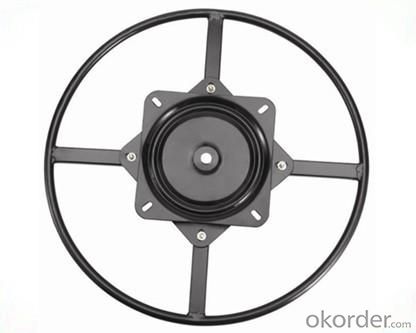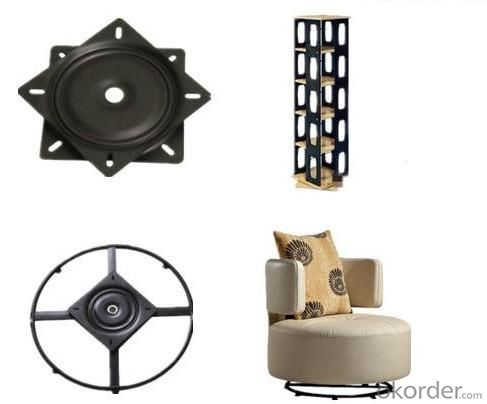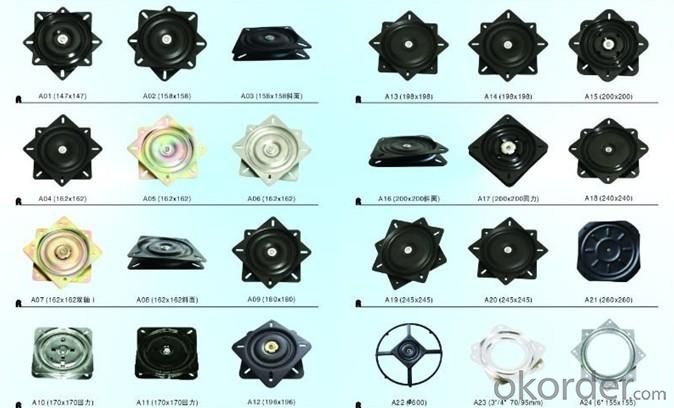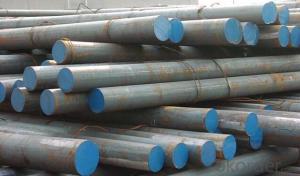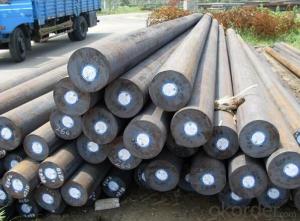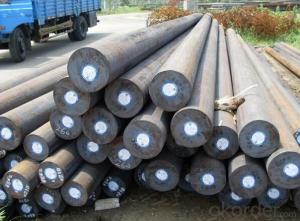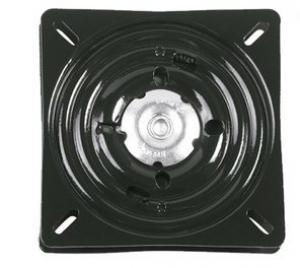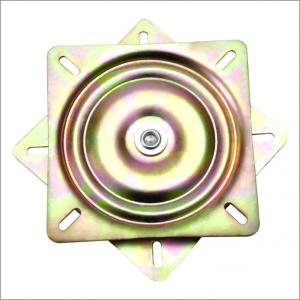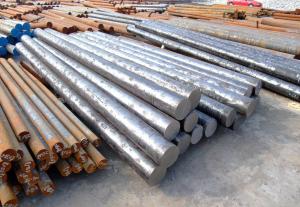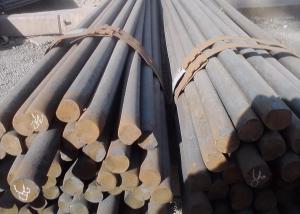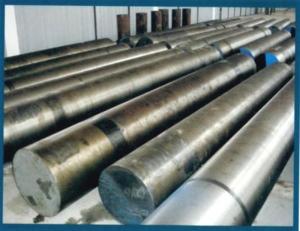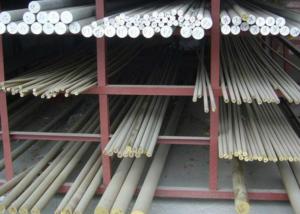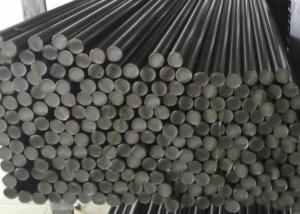Swivel Plate SV4701
- Loading Port:
- Guangzhou
- Payment Terms:
- TT or LC
- Min Order Qty:
- 200 pc
- Supply Capability:
- 40000 Pieces Per Month pc/month
OKorder Service Pledge
OKorder Financial Service
You Might Also Like
Quick Details of Swivel Plate SV4701:
Type: Chair Mechanism Place of Origin: Guangdong, China (Mainland) Packing: 6 pcs /arton material: A3 steel plate net weight: 6kg/ pcs
H S Code: 9403900090 size: diameter 610mm surface: black powder coated name: recline chair swivel base
Specifications of Swivel Plate SV4701:
1.Competetive price
2.Material:steel, long serivice life
3.10''swivel inside, Thickness 3.0mm heavy duty
recline chair swivel base
Function: this device is installed in recline chair for rotate
Material: Steel
Thickness: 3.0mm
Weight: 6kgs/ pc
Product Photos:
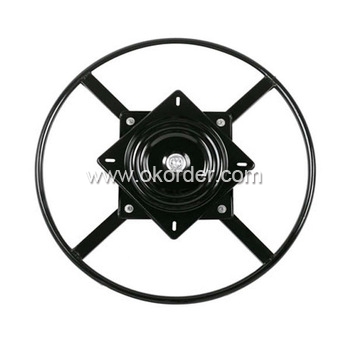
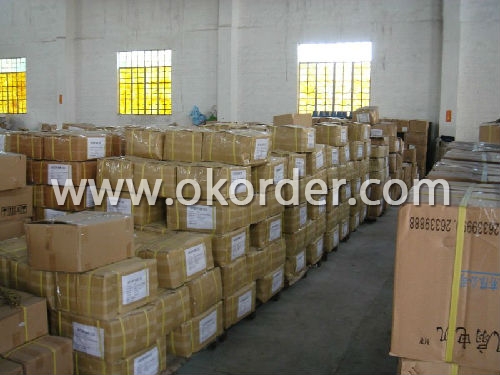
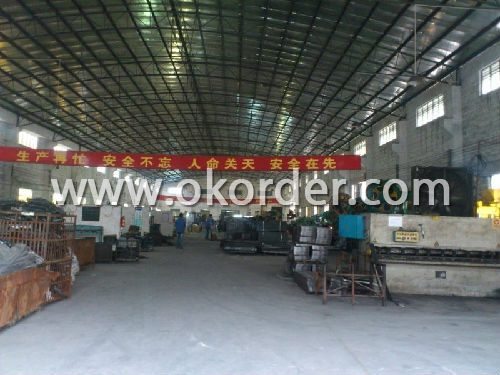
Packaging & Delivery:
Packaging Details: 6pcs /carton, size:62*62*27cm, GW:36.5kg
Delivery Detail: 12-15 days for quantity 600 pcs
- Q: What are the main applications of special steel in the marine sector?
- Special steel is widely used in the marine sector for various applications. Some of the main applications include the construction of ship hulls, offshore platforms, and marine structures. Special steel's high strength, corrosion resistance, and durability make it suitable for withstanding harsh marine environments. Additionally, special steel is used in propeller shafts, rudders, and other critical components, ensuring efficient and reliable performance of marine vessels.
- Q: How does special steel contribute to the flexibility of products?
- There are multiple ways in which special steel contributes to the flexibility of products. Firstly, its high strength and durability are well-known, enabling manufacturers to create products that can withstand heavy loads or extreme conditions. This allows for the production of flexible products suitable for various applications, ranging from automotive parts to construction materials. Furthermore, special steel possesses exceptional ductility and malleability, meaning it can be easily shaped, bent, or molded into different forms without compromising its structural integrity. This flexibility in design empowers manufacturers to produce products with intricate details and complex shapes, meeting specific customer demands or industry standards. Moreover, special steel's resistance to corrosion and wear guarantees that products made with this material have a longer lifespan and can endure harsh environments. This enhances the flexibility of products by minimizing the need for frequent replacements or repairs, ultimately saving time and costs for both manufacturers and end-users. Additionally, special steel's ability to maintain its mechanical properties at high temperatures makes it suitable for applications where thermal stability is vital. This enables the production of products that can function reliably in extreme heat or cold conditions, expanding their potential uses in industries such as aerospace, energy, or manufacturing. To summarize, special steel's high strength, ductility, corrosion resistance, and thermal stability all contribute to the flexibility of products. By providing a versatile and dependable material, special steel facilitates the production of products that can adapt to diverse requirements and environments, offering improved performance and longevity.
- Q: What are the requirements for special steel used in construction equipment manufacturing?
- The requirements for special steel used in construction equipment manufacturing typically include high strength, durability, and resistance to wear and corrosion. Additionally, the steel should have good weldability and machinability to ensure ease of fabrication. It should also possess excellent impact resistance to withstand heavy loads and harsh working conditions.
- Q: What are the main applications of special steel in the power distribution industry?
- The main applications of special steel in the power distribution industry include the manufacturing of power transmission towers, transformers, and various high voltage equipment. Special steel is used due to its excellent strength, durability, and resistance to corrosion, which are crucial qualities for ensuring the reliability and efficiency of power distribution systems.
- Q: How does special steel contribute to the automotive fuel efficiency?
- Special steel contributes to automotive fuel efficiency in several ways. Firstly, special steel is lighter and stronger than traditional steel, allowing for the use of thinner and lighter components in the vehicle's structure. This reduces the overall weight of the vehicle, which in turn reduces the amount of fuel needed to propel it. Additionally, special steel can be used to create more aerodynamic designs, reducing air resistance and improving the vehicle's fuel efficiency. Furthermore, special steel can be used in the manufacturing of high-efficiency engines, improving their performance and reducing fuel consumption. Overall, the use of special steel in the automotive industry helps to create lighter, more aerodynamic, and more fuel-efficient vehicles.
- Q: How is structural steel used in building construction?
- Structural steel is extensively used in building construction due to its high strength and versatility. It serves as the primary framework for buildings, providing support and stability. The steel beams and columns are used to create the skeleton of the structure, spanning large distances and allowing for open floor plans. Additionally, steel is used for various other elements such as stairs, handrails, and roof trusses. Its durability, fire resistance, and ability to withstand extreme weather conditions make it an ideal material for constructing high-rise buildings, industrial facilities, and bridges.
- Q: How does special steel contribute to the dimensional stability of products?
- Special steel contributes to the dimensional stability of products through its unique properties and characteristics. One of the key factors is its high level of hardness, which allows it to resist deformation or changes in shape and size under varying temperature and load conditions. This hardness ensures that the product maintains its intended dimensions and shape, even when subjected to external forces or thermal fluctuations. Moreover, special steel often possesses excellent thermal conductivity, enabling it to efficiently distribute and dissipate heat. This property helps prevent localized heating or cooling, which can cause dimensional changes in materials. By maintaining consistent temperatures across the product, special steel minimizes the risk of warping, expansion, or contraction, thereby ensuring dimensional stability. Another aspect that contributes to dimensional stability is the low coefficient of thermal expansion of special steel. This coefficient measures the amount of expansion or contraction a material undergoes in response to temperature changes. Special steel's low coefficient means it experiences minimal dimensional changes when exposed to temperature variations. This characteristic is particularly crucial in applications where precise tolerances and tight dimensional control are required, such as in aerospace or automotive industries. Furthermore, special steel often possesses enhanced corrosion resistance, which helps prevent rusting or degradation of the material over time. Corrosion can lead to changes in the shape and dimensions of products, compromising their dimensional stability. By using special steel, manufacturers can ensure that their products maintain their original dimensions and structural integrity, even in harsh or corrosive environments. Overall, the unique properties of special steel, such as high hardness, excellent thermal conductivity, low coefficient of thermal expansion, and corrosion resistance, all contribute to the dimensional stability of products. By incorporating special steel into the manufacturing process, companies can produce high-quality products that maintain their precise dimensions and shape, ensuring reliability and longevity for end-users.
- Q: Can special steel be used in the food processing industry?
- Yes, special steel can be used in the food processing industry. Special steel, such as stainless steel, is commonly used in food processing equipment and utensils due to its corrosion resistance, durability, and ability to maintain hygiene standards. It is suitable for applications that require frequent cleaning, exposure to moisture, and contact with food, ensuring the safety and quality of food processing operations.
- Q: How does special steel contribute to the strength of structures?
- Special steel contributes to the strength of structures through its unique properties and composition. It is specifically engineered to have higher tensile strength, durability, and resistance to corrosion compared to regular steel. Its increased strength allows structures to withstand heavier loads, vibrations, and extreme weather conditions more effectively, ensuring their stability and longevity. Additionally, the use of special steel enables the construction of lighter and more streamlined structures, as thinner sections can be used without compromising their strength. Overall, special steel plays a vital role in enhancing the structural integrity and safety of various buildings, bridges, and infrastructure projects.
- Q: What are the applications of special steel in the agriculture sector?
- Special steel has numerous applications in the agriculture sector. It is used in the manufacturing of machinery and equipment such as plows, cultivators, and harvesters, due to its high strength and durability. Special steel is also utilized in the production of storage tanks and silos, providing protection against corrosion and ensuring the safety of agricultural products. Additionally, it is employed in the fabrication of irrigation systems, fencing, and animal enclosures, offering longevity and resistance to wear and tear. Overall, special steel plays a crucial role in improving productivity and efficiency in various agricultural operations.
1. Manufacturer Overview
| Location | Guangdong, China |
| Year Established | 1996 |
| Annual Output Value | US$ 5 to US$ 10 Million |
| Main Markets | 40.00% Domestic Market 10.00% Eastern Asia 10.00% Eastern Europe 8.00% Southeast Asia 8.00% South America 5.00% South Asia 5.00% Southern Europe 5.00% North America |
| Company Certifications | Test report for 3 section slide |
2. Manufacturer Certificates
| a) Certification Name | |
| Range | |
| Reference | |
| Validity Period |
3. Manufacturer Capability
| a) Trade Capacity | |
| Nearest Port | Shunde, Huangpu, Shenzhen |
| Export Percentage | 61% - 70% |
| No.of Employees in Trade Department | 3-5 People |
| Language Spoken: | English, Chinese, Spanish, Japanese |
| b) Factory Information | |
| Factory Size: | 1,000-3,000 square meters |
| No. of Production Lines | 3 |
| Contract Manufacturing | OEM Service Offered Design Service Offered Buyer Label Offered |
| Product Price Range | Average |
Send your message to us
Swivel Plate SV4701
- Loading Port:
- Guangzhou
- Payment Terms:
- TT or LC
- Min Order Qty:
- 200 pc
- Supply Capability:
- 40000 Pieces Per Month pc/month
OKorder Service Pledge
OKorder Financial Service
Similar products
Hot products
Hot Searches
Related keywords
